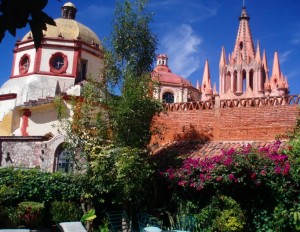 San Miguel de Allende is located in Guanajuato state. It is considered a “Pueblo Magico” (Magical Town) and it is considered Cultural Heritage of Humanity by the UNESCO; the distinction was awarded due to the cultural and architectural contribution to the Mexican Baroque and the importance of this city in the struggle for Independence of Mexico from Spain. The best way to enjoy San Miguel de Allende is walking down the cobblestone streets filled with colonial mansions and beautiful temples such as the Parish of St. Michael the Archangel and the Oratory of St. Philip Neri. more…
San Miguel de Allende is located in Guanajuato state. It is considered a “Pueblo Magico” (Magical Town) and it is considered Cultural Heritage of Humanity by the UNESCO; the distinction was awarded due to the cultural and architectural contribution to the Mexican Baroque and the importance of this city in the struggle for Independence of Mexico from Spain. The best way to enjoy San Miguel de Allende is walking down the cobblestone streets filled with colonial mansions and beautiful temples such as the Parish of St. Michael the Archangel and the Oratory of St. Philip Neri. more…
Tag-Archive for "Pueblo Mágico"
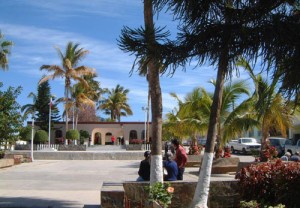 Just about halfway between Cabo San Lucas and La Paz, there is a magical and colorful town, a refuge for hippies, artists and farmers: Todos Santos. It has an oasis with abundance of fruit crops (particularly mango, papaya and avocado) that allows the proliferation of palm trees and other vegetation other than that of the prevailing dry forests in the vicinity. There are several beaches nearby with strong waves ideal for surfing. The tourists can enjoy the warmth of the inhabitants that are used to live in pace, enjoying and taking care of nature and taking part of the cultural diversity of their community. In a stroll through its streets you can admire the colonial architecture that still preserves buildings of the nineteenth century, like the “Casa de la Cultura”, the beautiful church and many art galleries and craft shops. more…
Just about halfway between Cabo San Lucas and La Paz, there is a magical and colorful town, a refuge for hippies, artists and farmers: Todos Santos. It has an oasis with abundance of fruit crops (particularly mango, papaya and avocado) that allows the proliferation of palm trees and other vegetation other than that of the prevailing dry forests in the vicinity. There are several beaches nearby with strong waves ideal for surfing. The tourists can enjoy the warmth of the inhabitants that are used to live in pace, enjoying and taking care of nature and taking part of the cultural diversity of their community. In a stroll through its streets you can admire the colonial architecture that still preserves buildings of the nineteenth century, like the “Casa de la Cultura”, the beautiful church and many art galleries and craft shops. more…
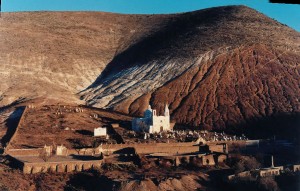 The village is located in the state of San Luis Potosi in northern Mexico, is a semi-abandoned town in the desert. It is a colonial mining town that currently is almost uninhabited because the production in the mines stopped, the veins were almost empty and people began to leave the town searching for work.
The village is located in the state of San Luis Potosi in northern Mexico, is a semi-abandoned town in the desert. It is a colonial mining town that currently is almost uninhabited because the production in the mines stopped, the veins were almost empty and people began to leave the town searching for work.
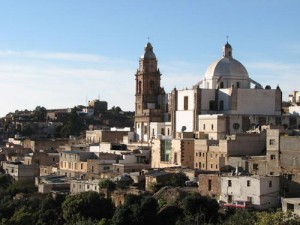 In 1733 it was discovered the first silver vein, but later, in 1744, the village was burned by indigenous groups who were trying to defend themselves from the war of extermination conducted by the Spanish. The town was rebuilt in 1767, thanks to the discovery of new veins of silver in the place, which led to a crowd of miners and adventurers came to the place in search of luck, unleashing a veritable fever of silver in totally unfavorable conditions: no roads, there was no water and supplies were difficult. All this helped later to improve transport links between the capital and Catorce, and the construction of its most representative buildings. more…
In 1733 it was discovered the first silver vein, but later, in 1744, the village was burned by indigenous groups who were trying to defend themselves from the war of extermination conducted by the Spanish. The town was rebuilt in 1767, thanks to the discovery of new veins of silver in the place, which led to a crowd of miners and adventurers came to the place in search of luck, unleashing a veritable fever of silver in totally unfavorable conditions: no roads, there was no water and supplies were difficult. All this helped later to improve transport links between the capital and Catorce, and the construction of its most representative buildings. more…
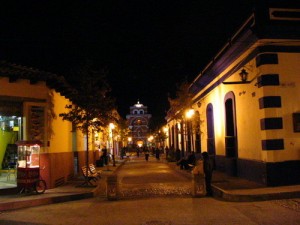 San Cristobal de las Casas is located in the center of the State of Chiapas, is the main tourist destination in Chiapas. It was one of the first towns built in the Spanish Northern America and it was named Pueblo Mágico, but actually has the quality of city. It has been considered the cultural capital and pride of the State of Chiapas, where there are different cultural expressions both from Chiapas and worldwide.
San Cristobal de las Casas is located in the center of the State of Chiapas, is the main tourist destination in Chiapas. It was one of the first towns built in the Spanish Northern America and it was named Pueblo Mágico, but actually has the quality of city. It has been considered the cultural capital and pride of the State of Chiapas, where there are different cultural expressions both from Chiapas and worldwide.
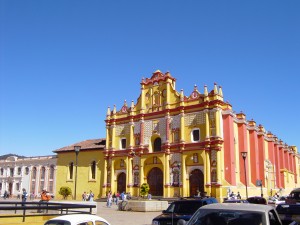 In this city people can discover magnificent religious buildings like the Cathedral, built in the seventeenth century or the Temple of Santo Domingo, which dates from 1547, the two buildings are lined with colorful details of Baroque and indigenous manufacturing, which perpetuate the cultural heritage of ethnic Tzotzil, Tzeltal and Lacandones, from whom we can also observe exotic collections of objects of daily use, handicrafts and sheltered prehispanic pieces in the Museum Na Bolom or the Cultural Center of Los Altos de Chiapas. Today many of these indigenous tribes still live in the neighborhood. more…
In this city people can discover magnificent religious buildings like the Cathedral, built in the seventeenth century or the Temple of Santo Domingo, which dates from 1547, the two buildings are lined with colorful details of Baroque and indigenous manufacturing, which perpetuate the cultural heritage of ethnic Tzotzil, Tzeltal and Lacandones, from whom we can also observe exotic collections of objects of daily use, handicrafts and sheltered prehispanic pieces in the Museum Na Bolom or the Cultural Center of Los Altos de Chiapas. Today many of these indigenous tribes still live in the neighborhood. more…
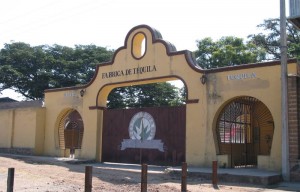 Tequila is a municipality and a town in the state of Jalisco. The name Tequila comes from the Nahuatl word Tecuilan or tequillan, which means “Place of taxes”. Since 2003 it’s is a “Pueblo Mágico” and is famous worldwide for giving its name to Tequila, being the place where it is produced.
Tequila is a municipality and a town in the state of Jalisco. The name Tequila comes from the Nahuatl word Tecuilan or tequillan, which means “Place of taxes”. Since 2003 it’s is a “Pueblo Mágico” and is famous worldwide for giving its name to Tequila, being the place where it is produced.
The town of Santiago de Tequila was founded in 1530 by Franciscan monks on the orders of Fray Juan Calera. In 1600 was established the first distillery of agave, which was previously consumed but not distilled, creating like this the first tequila factory itself. After independence, in 1824 Tequila was named one of the 26 departments that originally divided the state of Jalisco, also giving it the title of town. more…
